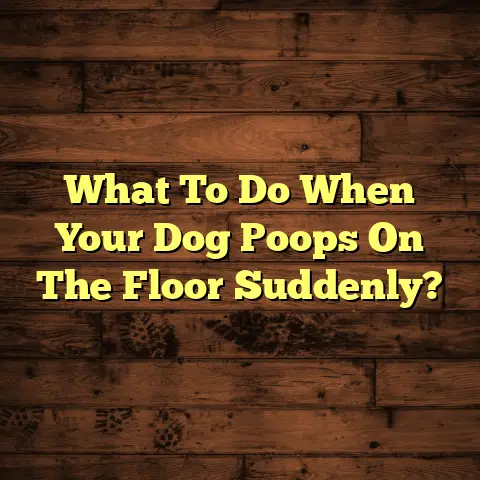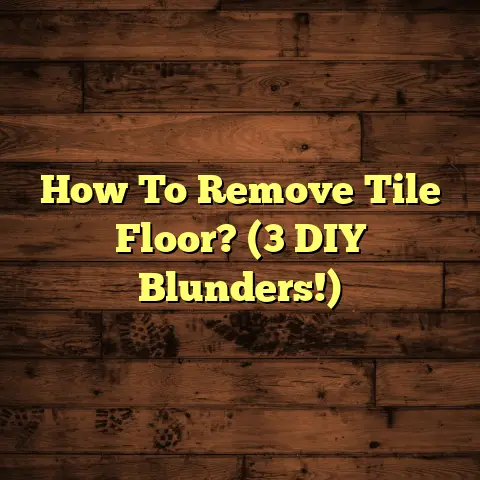How Long Does Floor Wax Last? (2 Year Limit!)
Floor waxing? It’s a classic for a reason. It’s a fantastic way to protect and beautify your hardwood, vinyl, laminate, and even tile floors. But here’s the thing: floor wax isn’t a “set it and forget it” kind of deal.
Understanding how long it lasts is essential for keeping your floors looking their best.
So, what’s the bottom line? While many factors come into play, I generally advise my clients to consider a two-year maximum lifespan for floor wax to maintain effective protection. Let’s dive into why!
Section 1: Understanding Floor Wax
Okay, so what exactly is floor wax? Simply put, it’s a protective coating applied to flooring to shield it from scratches, moisture, and stains. It also gives your floors that beautiful, glossy shine we all love.
There are a few different types you’ll encounter:
-
Paste Wax: This is your traditional, old-school wax. It’s durable, but requires a lot of elbow grease to apply.
-
Liquid Wax: Easier to apply than paste wax, but might not be as durable.
-
Synthetic Finishes: These are often acrylic or polyurethane-based and offer good protection and shine.
Why do we even bother waxing floors? Well, think of it as a shield against the daily wear and tear. Wax protects against:
- Scratches: From shoes, furniture, and pets.
- Moisture: Spills happen! Wax helps prevent water damage.
- Stains: Keeps those accidental coffee spills from becoming permanent.
- Aesthetic Appeal: Let’s be honest, a freshly waxed floor just looks amazing.
Section 2: Factors Affecting the Longevity of Floor Wax
Alright, so that two-year limit I mentioned? It’s not set in stone. Several factors can affect how long your floor wax lasts. Let’s break them down:
-
Environmental Factors:
- Humidity: High humidity can soften wax, making it wear down faster.
- Temperature: Extreme temperature fluctuations can cause the wax to crack or peel.
- Sunlight: UV rays can fade and degrade the wax over time.
-
Foot Traffic and Wear-and-Tear:
-
This is a big one! The more foot traffic your floors see, the faster the wax will wear away. Think about it: a hallway is going to need re-waxing sooner than a guest bedroom.
-
Underlying Flooring Material:
-
Different flooring materials interact with wax differently. For example, hardwood might absorb wax more readily than vinyl, affecting how long the protection lasts.
- Also, if the floor wasn’t properly prepped, it can peel off sooner than expected.
Section 3: The Two-Year Limit
Okay, let’s talk about that two-year limit. Where does that number come from?
Well, based on my experience and industry best practices, after about two years, the protective qualities of most floor waxes start to diminish significantly.
Think of it like this: the wax layer gets thinner, microscopic scratches accumulate, and the shine starts to fade.
Neglecting to reapply wax can lead to:
- Diminished Protection: Your floors become more vulnerable to scratches, stains, and moisture damage.
- Visible Wear: You’ll start to see dull spots, scuff marks, and an overall lack of luster.
I’ve seen clients who went way beyond the two-year mark, and their floors were noticeably worse for wear. Trust me, a little maintenance goes a long way!
Section 4: Signs that Floor Wax Needs Reapplication
How do you know when it’s time to reapply? Keep an eye out for these telltale signs:
- Dullness: The floor loses its shine and appears lackluster.
- Scratches: You start noticing more scratches and scuff marks, even after cleaning.
- Discoloration: The wax may start to yellow or darken in certain areas.
- Water Spots: Water no longer beads up on the surface, indicating the wax is no longer providing adequate protection.
- Uneven Shine: Some areas look shinier than others, indicating uneven wear of the wax.
I always recommend periodic inspections. Take a close look at your floors every few months.
Are they still looking vibrant and protected? Great! If not, it’s time to start thinking about re-waxing.
Section 5: The Process of Waxing Floors
Alright, let’s get down to the nitty-gritty. How do you actually wax floors? Here’s a step-by-step guide:
-
Preparation:
- Clear the Room: Remove all furniture and rugs.
- Clean the Floor: Thoroughly sweep, vacuum, and mop the floor to remove dirt, dust, and debris.
- Strip Old Wax (If Necessary): If there’s a buildup of old wax, you may need to use a wax stripper to remove it.
-
Application:
-
Apply Wax: Using a clean mop, applicator pad, or cloth, apply a thin, even coat of wax to the floor. Follow the manufacturer’s instructions for the specific wax you’re using.
- Work in Sections: Divide the floor into manageable sections and work on one section at a time.
- Overlap Strokes: Slightly overlap each stroke to ensure even coverage.
-
Drying:
-
Allow to Dry: Let the wax dry completely according to the manufacturer’s instructions. This can take anywhere from 30 minutes to several hours.
- Apply Additional Coats (If Desired): For extra protection and shine, you can apply a second or third coat of wax, allowing each coat to dry completely before applying the next.
-
Buffing (Optional):
-
Buff the Floor: Once the wax is completely dry, you can buff the floor with a clean cloth or a floor buffer to enhance the shine.
Tools and Products:
- Mop or Applicator Pad: Choose a high-quality mop or applicator pad designed for applying floor wax.
- Floor Buffer: A floor buffer can make the job easier and provide a more professional finish.
- Wax Stripper: If you need to remove old wax buildup.
- Appropriate Floor Wax: Choosing the right wax for your floor type is crucial.
Section 6: Maintenance Tips for Prolonging Floor Wax Lifespan
Want to get the most out of your floor wax and extend its lifespan? Here are some tips:
-
Daily Maintenance:
- Sweep or Vacuum Regularly: Remove dirt and debris that can scratch the wax.
- Use Doormats: Place doormats at entrances to trap dirt and moisture.
-
Weekly Maintenance:
-
Mop with a pH-Neutral Cleaner: Avoid harsh chemicals that can strip the wax.
- Use Microfiber Mop: A microfiber mop is gentle on the wax and effectively removes dirt.
-
Protective Measures:
-
Use Furniture Pads: Place felt pads under furniture legs to prevent scratches.
- Avoid High Heels: High heels can dent and scratch the wax.
-
Regular Inspections and Touch-Ups:
-
Inspect Regularly: Check for dull spots, scratches, and other signs of wear.
- Touch-Up as Needed: Apply a small amount of wax to areas that are showing wear.
By following these maintenance tips, you can significantly extend the life of your floor wax and keep your floors looking beautiful for longer!
Section 7: Alternatives to Waxing
While waxing is a great option, it’s not the only game in town. Here are a few alternatives to consider:
- Polyurethane Finishes: These are durable, long-lasting finishes that provide excellent protection against scratches, moisture, and stains. They’re often used on hardwood floors.
- Acrylic Finishes: Similar to polyurethane, but generally less durable. They’re a good option for lower-traffic areas.
- Engineered Wood: These are more durable than solid wood, and can be installed in most rooms of your house.
Benefits and Drawbacks:
| Finishing Option | Benefits | Drawbacks |
|---|---|---|
| Waxing | Enhances appearance, protects from scratches, relatively inexpensive | Requires regular maintenance, less durable than other options |
| Polyurethane | Highly durable, long-lasting, water-resistant | Can be expensive, requires professional application for best results |
| Acrylic | More affordable than polyurethane, good for low-traffic areas | Less durable than polyurethane, may require more frequent reapplication |
Each option has its pros and cons, so it’s essential to weigh them carefully based on your needs and budget.
Conclusion
So, there you have it! Floor waxing is a fantastic way to protect and beautify your floors. But remember, it’s not a one-time application.
Understanding the lifespan of floor wax, adhering to that two-year reapplication guideline, and following proper maintenance practices are crucial for keeping your floors looking their best.
By choosing the best option for your floor care, you can ensure the longevity and beauty of your flooring surfaces for years to come. Now go forth and wax those floors!





